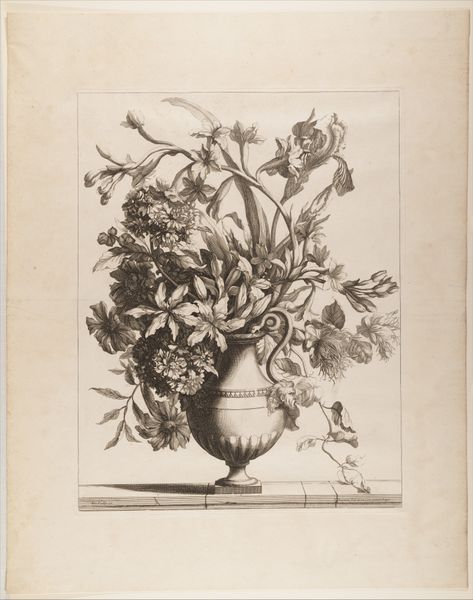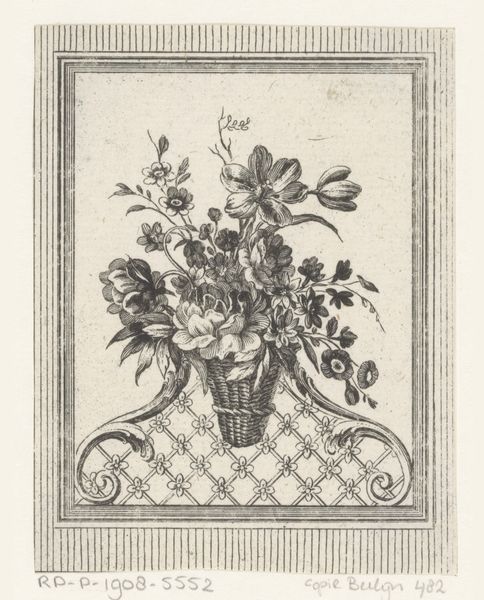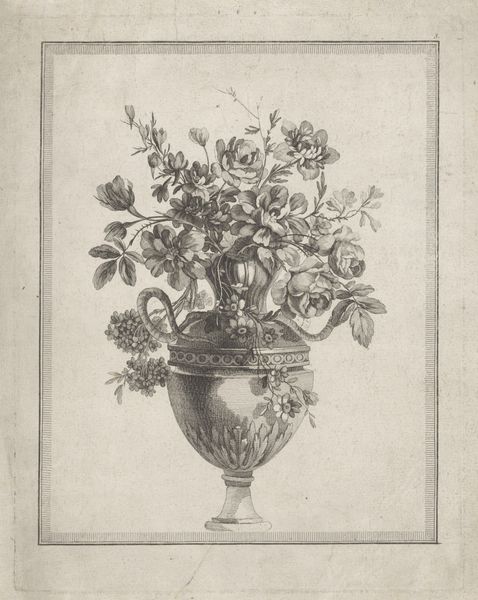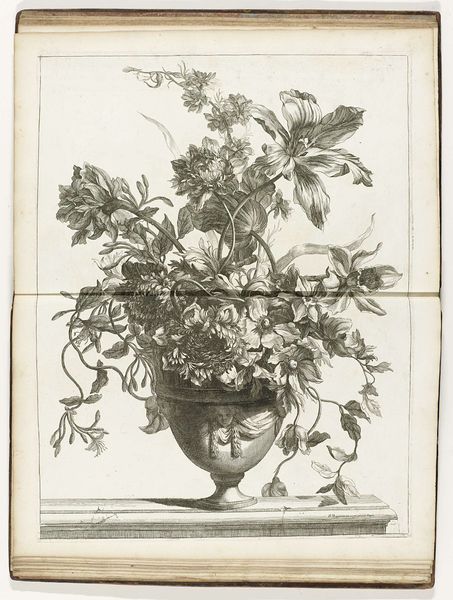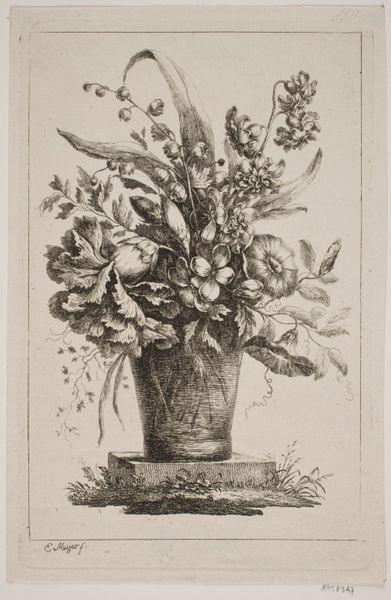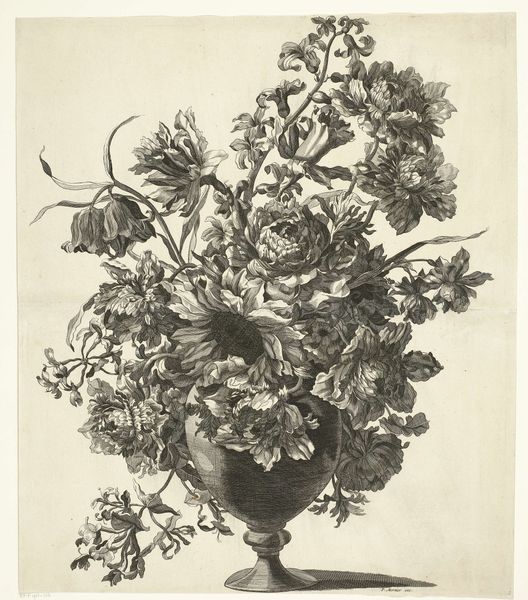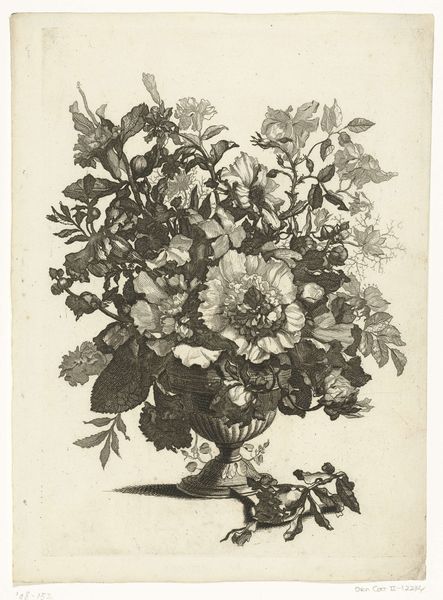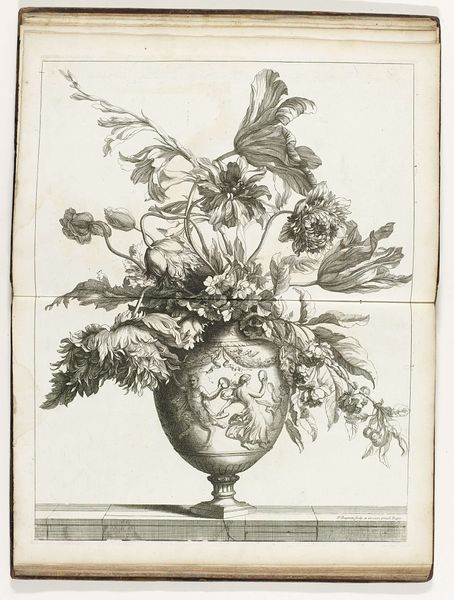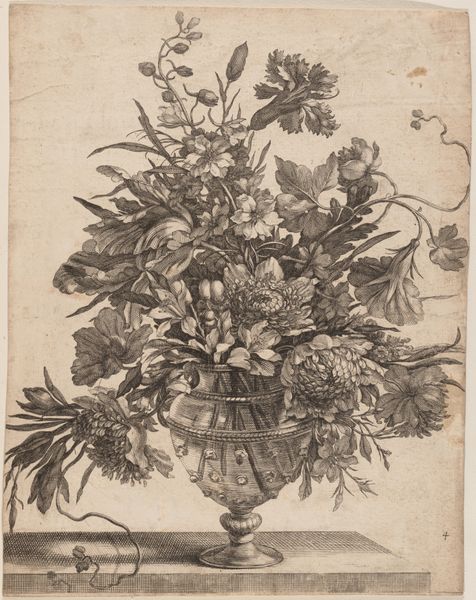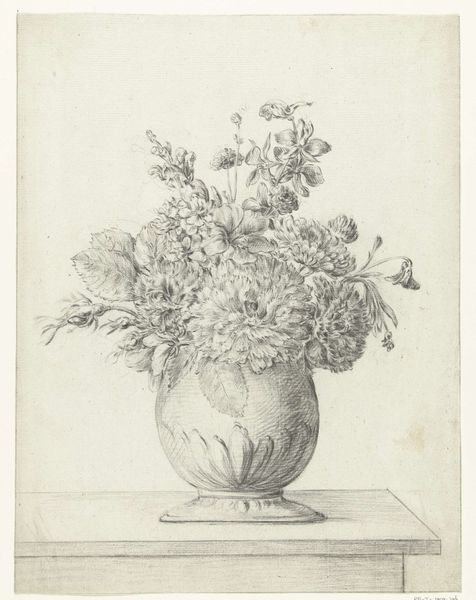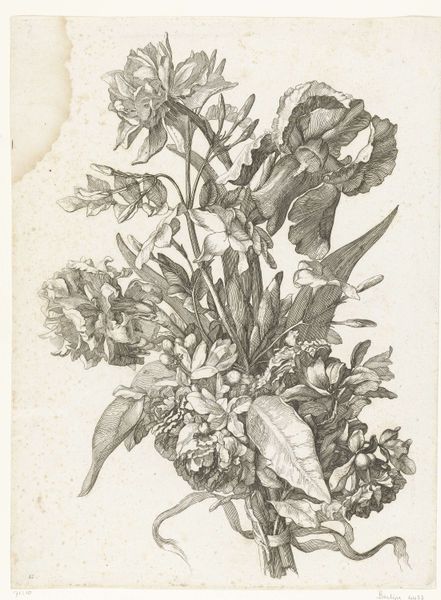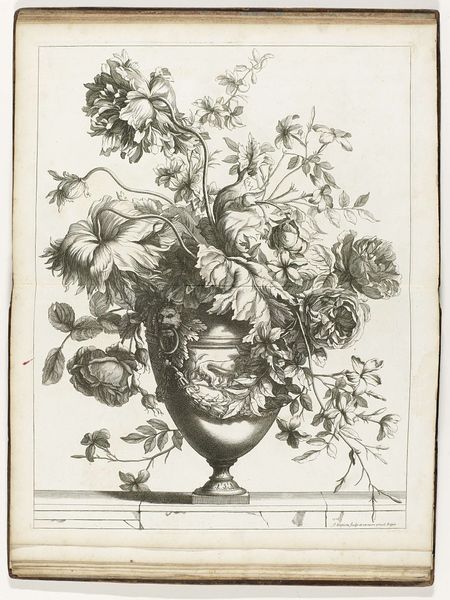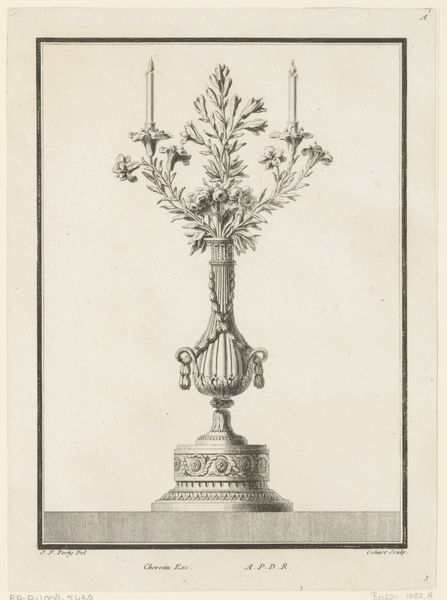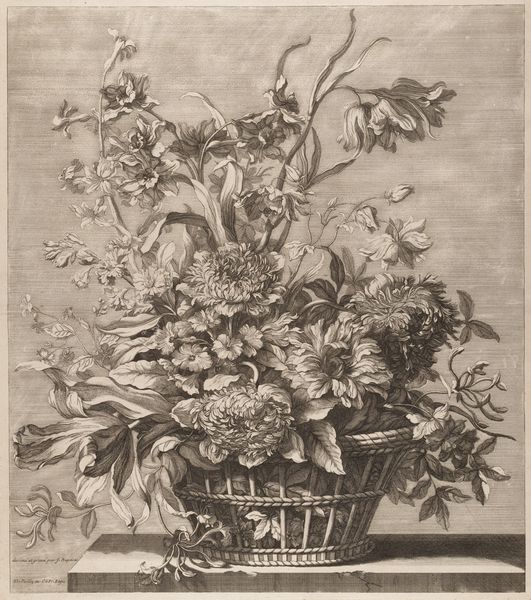
Dimensions: height 282 mm, width 223 mm
Copyright: Rijks Museum: Open Domain
Curator: "Bloemen in vaas met drie oren," or "Flowers in a Vase with Three Ears," a 1778 engraving by Etienne Claude Voysard. It's currently held at the Rijksmuseum. What's your first impression? Editor: It feels…delicate. Fragile, almost. The aged paper certainly lends to that impression, and the composition is quite dense, isn't it? All those blossoms overflowing the vase. It has this sense of the ephemeral about it. Curator: The overflowing abundance is very much in line with the decorative art and Baroque styles, reflecting a period fascinated with elaborate design. Flowers, of course, often symbolize cycles of life, beauty, and even mortality. And a three-eared vase… what do you think that represents, symbolically? Editor: Ah, the "three ears," yes. Given the context, I immediately consider accessibility—or lack thereof. The elite in the 18th century enjoyed a lifestyle marked by excess. Floral imagery like this reinforces ideas around leisure, privilege, and the fleeting nature of beauty, doesn't it? A world inaccessible to many. Curator: I see your point about the socioeconomic implications. But consider the number three—it has deep resonance in many cultures, often connected to ideas of harmony and balance. Perhaps those three 'ears' on the vase were not merely ornamental, but symbolic, anchoring the composition and echoing ideas of completeness. It seems unlikely they're functional for handles. Editor: Interesting point, especially in the context of a period wrestling with evolving ideas of humanism and equality during the Enlightenment. Do you think this engraving speaks to any anxieties surrounding mortality and the ephemeral nature of power? Is it possible that, beneath the facade of beauty, there lies a deeper critique of a society obsessed with fleeting appearances? Curator: Perhaps. Or maybe Voysard intended simply to capture the natural beauty surrounding him. A beautiful thing is always of its own moment, no matter the period. I like the idea of accessibility through an artistic skill open to every class of citizen. Editor: A vital, democratic ideal indeed, one reflected both within art and culture at large. Well, considering these multiple perspectives, it sounds like there’s more than meets the eye with this "still life."
Comments
No comments
Be the first to comment and join the conversation on the ultimate creative platform.
